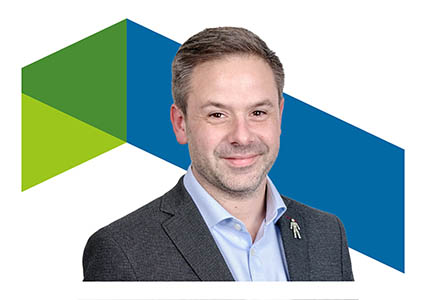
How can the construction and civil engineering industry tackle road runoff pollution?
George Woollard, Technical Director at Keyline Civils Specialist, discusses the impact of road runoff and how the construction and civil engineering industry can work together to reverse the damage.
Only the construction and civil engineering industry holds the key to solving road runoff pollution. We have the skills and expertise to make a difference – with 18 percent of water body failures in England a direct result of road runoff, it’s our responsibility to take action in addressing this critical environmental issue.
How serious is road runoff pollution?
Polycyclic aromatic hydrocarbons, carcinogens, heavy metals: these are just a few examples of the chemicals and debris that gather on road surfaces and are pushed through outfalls into waterways when it rains.
This toxic cocktail wreaks havoc on ecosystems. In the short term, the acute symptoms of a severe first flush of chemicals can result in the death of wildlife. Creatures that survive this first exposure suffer in the long-term. The chronic impact of road runoff is more insidious; it mutates wildlife, altering behaviours and causing reproductive issues.
Though less documented than its impact on surface water, road runoff’s effect on groundwater is also severe; winter road maintenance substances, like de-icing salts, have been found to increase the salinity of groundwater. We know even less about road runoff’s effect on humans.
Why has road runoff flown under the radar?
Few can deny how serious road runoff pollution is. Gathering the data to prove it, however, has been a challenge.
Monitoring is key to providing a body of evidence to governing bodies, proving the severity of road runoff pollution and the need for action. Though it has been argued that we know enough at this stage to treat road runoff routinely, a lack of data has undeniably slowed treatment.
Road runoff pollution is notoriously difficult to measure and quantify. It’s variable and weather dependent, so plotting out and scheduling monitoring is near-impossible for road runoff, as accurate sampling needs to be performed in the rain. Even finding the outfalls can be difficult and time-consuming; mapping the outfalls will require collaboration between parties with access to the information. Flaws with spot sampling, a lack of consistency in approach to sampling from researchers, no legal requirement and expense are other contributing factors.

But data is just one concern – regulatory issues, questions over who is responsible, maintenance and lack of resources are all parts of the problem. Due to these challenges, little has been done in England to address road runoff to date, but with Schedule 3 around the corner, this is sure to change.
How can we overcome the challenges involved?
None of the challenges described are insurmountable; there are several actions we can take to mitigate their impact. For example, existing research can often sit unused – checking for data already available and collating it can help reduce the expense of additional monitoring. Trial sites and using predictive tools are other ways of improving our approach to monitoring.
For regulatory issues, any solution is inevitably more complex. As mentioned, Schedule 3 of the Flood and Water Management Act 2010 is expected to come into effect in England soon, which makes sustainable drainage systems (SuDS) mandatory for new developments over 100m2. Schedule 3 has been in force in Wales since 2019 – the successful implementation of SuDS in Wales provides a useful framework for England to follow. Where a legal requirement is made, funding will soon be allocated – Schedule 3 is an important step forward in making SuDS an essential part of any design process.
Communication and collaboration will be key to addressing all challenges we face in solving SuDS, and, indeed, implementing the solutions themselves.
Building understanding largely comes down to effective communication. While we already have solutions to address road runoff pollution, awareness of these solutions and their proper implementation remains limited. Even when an outfall is identified as a priority for intervention and SuDS are installed, they can be ineffective if critical considerations, such as treatment flow rates, are not properly understood during the design phase.
SuDS: nature-based and hard engineered solutions
SuDS provide a practical solution to pollution by minimising the built environment’s impact on the natural water cycle. These systems manage surface water runoff to reduce the risk of flooding and pollution, mimicking natural drainage as closely to the source as possible. With water quality a core design principle, SuDS must incorporate effective pollution mitigation.
While nature-based solutions often come to mind first, in practice, SuDS are usually a balance of both natural and engineered components. Engineered SuDS, such as filtration systems and soakaway tanks, support the function of nature-based solutions, such as swales and ponds, and are generally easier to monitor, install, and maintain at a lower cost. Combining these approaches ensures a robust defence against pollution.
Early supply chain involvement and innovation
We have solutions to road runoff pollution. That doesn’t mean we can’t improve on them.
Current solutions may not suit certain environments and projects: in these instances, innovation is needed, and an engineered solution can be found. To create new product-based solutions, you need to bring the people who make these products to the table.
Bringing manufacturers and technical experts into the design phase earlier creates innovation opportunities. Collaboration with designers and engineers, environmental experts, and local authorities; by working together at the start of a project, the best possible solution to road runoff pollution can be found.
Our industry can drive change
At Keyline Civils Specialist, we recognise the opportunity our industry has to drive real change – earlier this year, we gathered senior figures in the industry alongside academics, government representatives and experts from the third sector for a roundtable to discuss road runoff pollution. We have since distilled their insights into a report, designed to raise awareness and bring the industry together.
We’re on the cusp of making real progress – with the solutions identified and the right people invested, it just takes a collective push to get the ball rolling.
Collaboration and communication are central to treating road runoff; as an industry, we need to start working together at the very beginning of projects to find the best solution available. If we continue to forge and develop these partnerships, we can solve the problem posed by road runoff – and help our rivers and waterways thrive once again.
For more insights on road runoff, read the full whitepaper at: